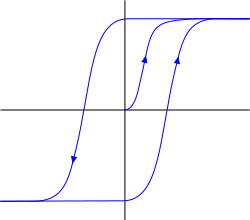Quote:
Originally Posted by SoupRKnowva /img/forum/go_quote.gif
oh wow, i jsut assumed that since most amps have input impedances in the multiple 10's of thousands of ohms that one with only 2k ohms would have require tons of current lol didnt even think to actually do the math and figure out it wouldnt need that much afterall, just alot in comparison.
|
Yup.
Quote:
| this paragraph is where i get confused. So does distortion go up with frequency? or were you just stating that most transformers have a THD of 1% at 20Hz at 2 volts so you would want to stay lower than that? |
Actually distortion goes down with frequency.
Here's a plot of the typical distortion behavior of a transformer at fixed levels versus frequency:
Quote:
| what causes the distortion to go up with voltage? is it the heating of the wire based on the natural resistance that causes it? |
No, it's the saturation of the core material that causes it. Transformers rely on the magnetization of the core material, which can only be magnetized to a certain point, after which it saturates and can't be magnetized any further.
This is illustrated by the B-H curve for magnetic materials.
In the middle, the lines are relatively straight, which means the magnetization is rather linear. But as you get closer to the top and bottom, the lines start curving until they eventually flatten out at the saturation point. Where the lines start curving magnetization becomes less and less linear which produces more and more distortion.
It's not unlike clipping in an amplifier. As you drive the input with higher and higher levels, the amplifier's output swings closer and closer to the power supply voltage, until the point at which the input tries to drive the output beyond the point that it can swing and the signal gets clipped.
Quote:
| ok i just thought i might have been asking too many questions, dont want to take up too much of your time, but im happy for what you're willing to donate. |
Don't worry about it. There were (and are) those in my life who have taken the time to answer the questions I've had (and have) in order to help me better understand things and to those people I am quite grateful. It would be rather ungrateful of me to turn around and be stingy with my time when it came to answering questions asked of me by others.
Edit: By the way, if you want to know more about audio transformers, I recommend giving chapter 13 of Glen Ballou's book, Handbook for Sound Engineers, written by Bill Whitlock of Jensen Transformers.
Here's the pdf version of that chapter:
Audio Transformers
se
 but do you have a headphone amp that uses a transformer for voltage gain? cuase you said that the only commercial one you know of is the SWGPA and you dont make any? or is cine mag another DIY'er?
but do you have a headphone amp that uses a transformer for voltage gain? cuase you said that the only commercial one you know of is the SWGPA and you dont make any? or is cine mag another DIY'er?





